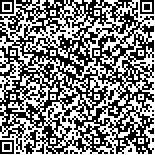下载中心
优秀审稿专家
优秀论文
相关链接
摘要

全球土地覆盖制图在过去的10年中取得重要进展,空间分辨率从300 m增加至30 m,分类详细程度也有所提高,从10余个一级类到包含29类的二级分类体系。然而,利用光学遥感数据在大空间范围制图方面仍有诸多挑战。本文主要介绍在农田、居住区、水体和湿地制图方面的挑战,讨论在使用多时相和多传感器遥感数据上的困难,这将是未来遥感应用的趋势。由于各种地表覆盖数据产品有自己定义的地表覆盖类型体系和处理流程,通过调和以及集成各种全球土地覆盖制图产品能够满足新的应用目的,并且可以最大程度地利用已有的土地覆盖数据。然而,未来全球土地覆盖制图需要能够按照新应用需求动态生成地表覆盖数据产品的能力。过去的研究表明有效地提高局部尺度制图的分类精度,更好的算法、更多种特征变量(新类型的数据或特征)以及更具代表性的训练样本都非常重要。我们却认为特征变量的使用更重要。本文提出了一个全球土地覆盖制图的新范式。在这个新范式中,地表覆盖类型的定义被分解为定性指标的类、定量指标的植被郁闭度和高度。非植被类型通过它们的光谱和纹理信息提取。复合考虑类、郁闭度和高度3种指标来定义和区别包含植被的地表覆盖类型。郁闭度和高度不能在分类算法中提取,需要借助其他直接测量或间接反演方法。新的范式还表明,一个普遍适用的训练样本集有效地提高了在非洲大陆尺度土地覆盖分类。为了确保更加容易地实现从传统的土地覆盖制图到全球土地覆盖制图新范式的转变,建议构建一体化的数据管理和分析系统。通过集成相关的观测数据、样本数据和分析算法,逐步建成全球土地覆盖制图在线系统,构建全球地表覆盖制图门户网站,为数据生产者、数据用户、专业研究人员、决策人员搭建合作互助的平台。
Important progress has been achieved in global land cover mapping in the past decade. For example, spatial resolution has increased from 300 m to 30 m. The level of classification detail has also improved from a plane level to a two-layered hierarchical classification scheme with 29 classes. However, major challenges emerge in mapping at a fine spatial scale with primarily optical data. This paper introduces the major challenges in mapping croplands, human settlements, water, and wetlands. The challenges in the use of multi-temporal and multi-sensor data, which may be useful in the future applications of remotely sensed data, are also discussed. Some of the on-going efforts to improve the quality of global land cover maps are then summarized. We argue that although harmonizing and integrating various global land cover products may be worthwhile for land cover data developed in the past, existing technologies provide sufficient data for improved map making if extra efforts are exerted. Developing and selecting effective algorithms, as well as several input variables (new types of data or features) for classification, and utilizing representative training samples are among the effective conventional measures for improving mapping accuracies at local scales. Data are more important than algorithms with regard to improving mapping accuracies. Finally, a new paradigm for global land cover mapping is proposed. This new paradigm includes a view of vegetation classes based on their types and form, canopy cover, and height. The appropriate determination of a vegetation class requires complementary information on canopy cover and height that cannot be extracted with classification algorithms. The new paradigm also suggests that a universally applicable training sample set is effective in improving land cover classification at the continental scale of Africa. To ensure an easy transition from traditional land cover mapping to the new paradigm of global land cover mapping, we recommend the creation of an all-in-one data management and analysis system. This system can be used as a foundation for a global land cover mapping portal that links freely accessible cyberspace resources and bridges data users and producers, specialists, and laymen toward a gradually evolving online global land cover mapping system.

